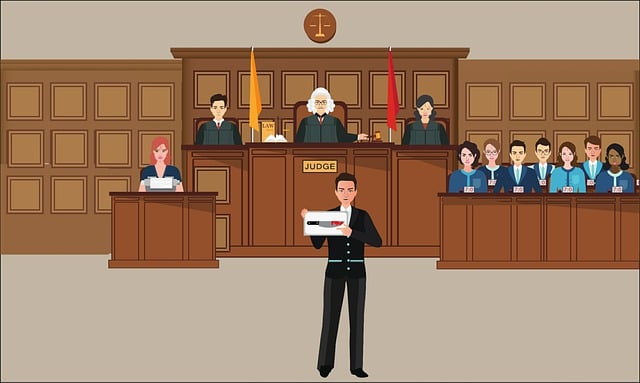The Breach of Contract Litigation Process Explained involves identifying contractual breaches, filing lawsuits, seeking remedies, and defending against claims. Defenses include denying breaches or attributing impediments, while counterclaims may be asserted. Alternative Dispute Resolution (ADR) methods like mediation and arbitration offer faster, less costly solutions compared to traditional litigation.
“Unraveling the complex world of breach of contract litigation, this comprehensive guide offers a detailed look at the process, defenses, and alternatives. From understanding the foundation of contract breach cases to navigating the legal steps involved, it demystifies the journey through courts. Learn about common defenses and how counterclaims can shape outcomes. Discover efficient dispute resolution methods, providing valuable insights for those seeking to avoid or navigate trial-centric resolutions in breach of contract matters.”
- Understanding Contract Breach Cases
- The Legal Process Step-by-Step
- Common Defenses and Counterclaims
- Resolving Disputes: Alternatives to Trial
Understanding Contract Breach Cases

Breach of contract cases are a common type of litigation that occurs when one party fails to fulfill their obligations as outlined in an agreement. This can involve various scenarios, from non-payment to delivery of goods or services not meeting the specified standards. The breach of contract litigation process begins with identifying the contractual obligation that has been breached and determining the extent of damages incurred by the aggrieved party.
For his clients, understanding the breach of contract litigation process is crucial. It often involves filing a lawsuit, where the plaintiff outlines the specifics of the breach and seeks remedies such as compensation for losses or specific performance to enforce the contract. The defendant then has the opportunity to respond, challenging the allegations and presenting their defense. An unprecedented track record of successful outcomes in similar cases can demonstrate the competence of legal counsel representing either party.
The Legal Process Step-by-Step

The Breach of Contract Litigation Process is a structured legal procedure designed to resolve disputes arising from contractual agreements. It begins with identifying a potential breach, where one party fails to fulfill their obligations as outlined in a contract. This step is crucial for both corporate and individual clients aiming to protect their interests. Once identified, the aggrieved party serves a formal notice, demanding that the breaching party rectify the issue.
If the breach remains unaddressed, legal action can be initiated. The litigation process involves filing a lawsuit, typically in a court of competent jurisdiction. During this phase, both parties exchange disclosures, gather and present evidence, and prepare for trial. This structured approach aims to ensure fairness, enabling philanthropic and political communities to resolve disputes effectively while upholding the integrity of contractual relationships.
Common Defenses and Counterclaims

In breach of contract litigation, defendants often employ various defenses to challenge the plaintiff’s claims. Common strategies include arguing that there was no breach, the agreement was formed under duress or fraud, or performance was prevented due to circumstances beyond their control. For instance, a defendant might claim they were unable to fulfill their contractual obligations because of an act of God, such as severe weather conditions, which hindered operations.
Counterclaims are another crucial aspect of the litigation process. Defendants may assert counterclaims against plaintiffs, seeking damages or relief for alleged harms caused by the plaintiff’s actions. This could involve claims for unpaid invoices, breach of confidentiality agreements, or even allegations of fraudulent misrepresentation if the plaintiff made false statements during contract negotiations. These counterclaims not only serve to defend against the initial lawsuit but also allow defendants to seek their own remedies and potentially shift the financial burden in certain cases, especially if the jury trials determine fault across the country.
Resolving Disputes: Alternatives to Trial

When it comes to resolving disputes, alternatives to trial can significantly benefit parties involved, especially in complex cases like breach of contract litigation. These alternative methods offer a more efficient and cost-effective way to achieve resolutions without going through lengthy courtroom battles. One such approach is mediation, where an impartial third party assists the disputing parties in reaching an agreement mutually acceptable to both sides. This process encourages open communication, fosters understanding, and allows for creative solutions tailored to each case’s unique circumstances.
Another effective strategy is arbitration, which involves a neutral arbitrator or panel hearing evidence and arguments from both parties before rendering a binding decision. Unlike trials, arbitrations are private, faster, and often less costly. They offer flexibility in choosing the rules of procedure and evidence presentation, enabling tailored approaches to specific cases. These alternative dispute resolution (ADR) methods not only avoid the public nature of a trial but also increase the likelihood of achieving extraordinary results, such as winning challenging defense verdicts or avoiding indictment altogether.
Breach of contract litigation, while intricate, is a crucial aspect of resolving business disputes. By understanding the intricacies of the legal process, from identifying contractual breaches to exploring alternative dispute resolution methods, businesses can navigate these challenges effectively. This comprehensive guide offers valuable insights into the breach of contract litigation process explained, empowering stakeholders to make informed decisions and mitigate risks in their legal endeavors.






